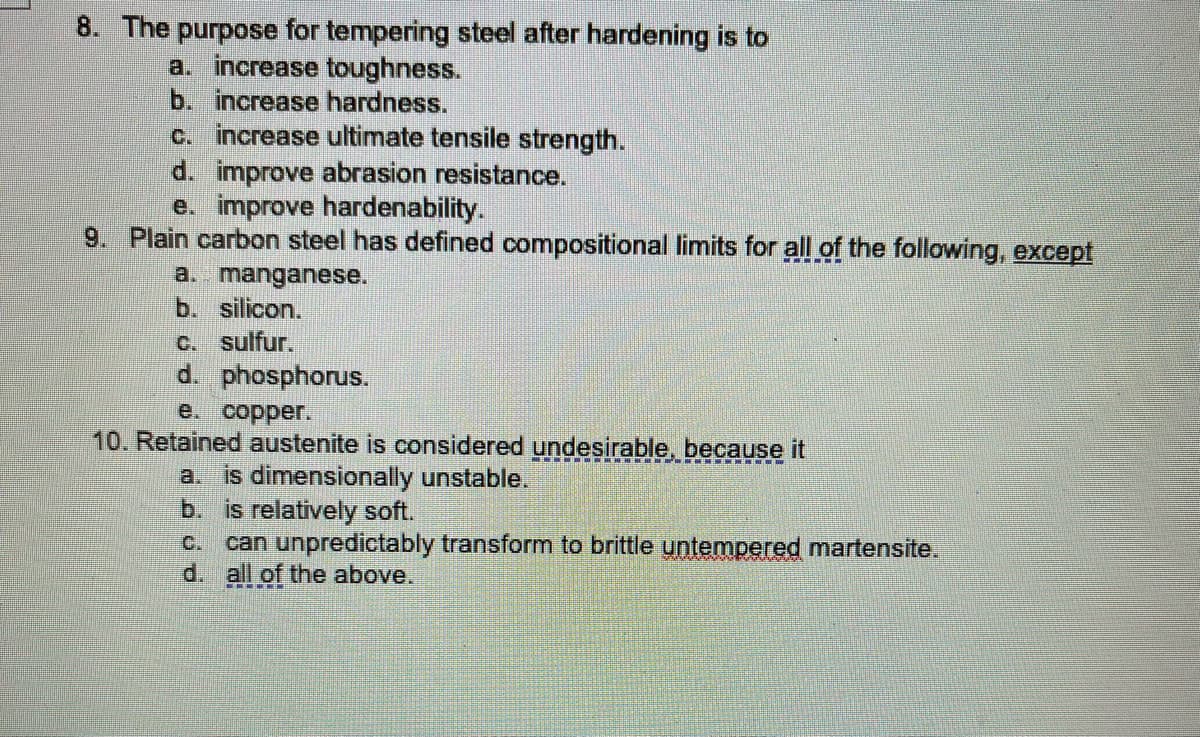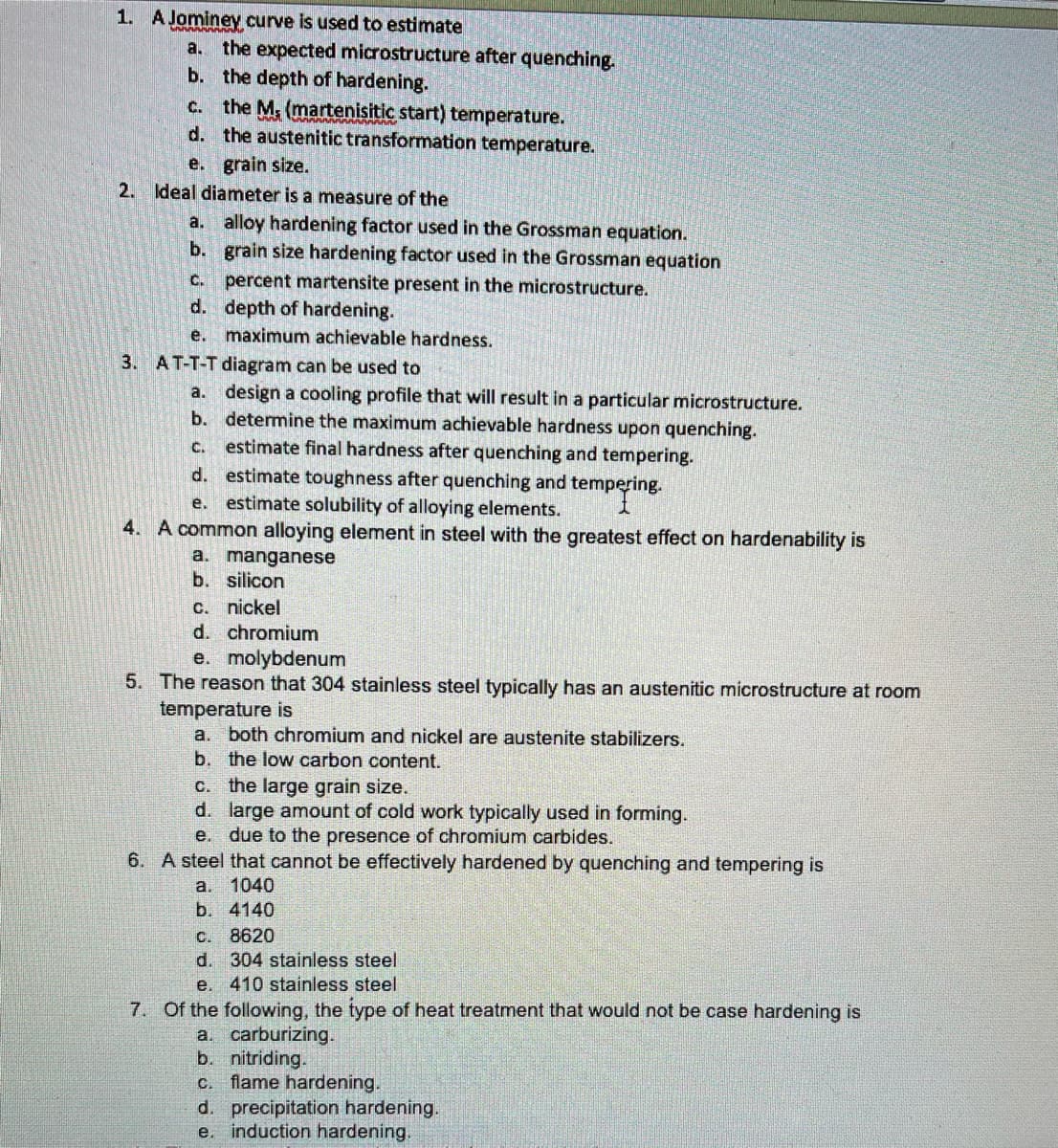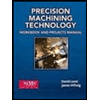8. The purpose for tempering steel after hardening is to a. increase toughness. b. increase hardness. c. increase ultimate tensile strength. d. improve abrasion resistance. e. improve hardenability. 9. Plain carbon steel has defined compositional limits for all of the following, except a. manganese. b. silicon. C. sulfur. d. phosphorus. e. сopper. 10. Retained austenite is considered undesirable, because it is dimensionally unstable. b. is relatively soft. can unpredictably transform to brittle untempered martensite. d. all of the above. a. C.


(1) Jominy curve is used for the estimation of the hardenability of the steel after the quenching process. Hence option A is the right answer as it tells about microstructure after quenching.
(2)
Ideal diameter is the measure of the percentage of martensite present in the microstructure.
Hence option C is the right answer.
(3)
TTT diagram is also known as time-temperature transformation diagram. this diagram shows different cooling curves at different temperatures.
Hence option A is the right answer.
(4)
Chromium is used to increase the hardenability of the steel.
Hence option D Is the right answer.
(5)
The reason that 304 stainless steel typically has an austenite microstructure at room temperature is both chromium and nickel are austenite stabilizers.
Option A is the right answer.
Trending now
This is a popular solution!
Step by step
Solved in 2 steps


